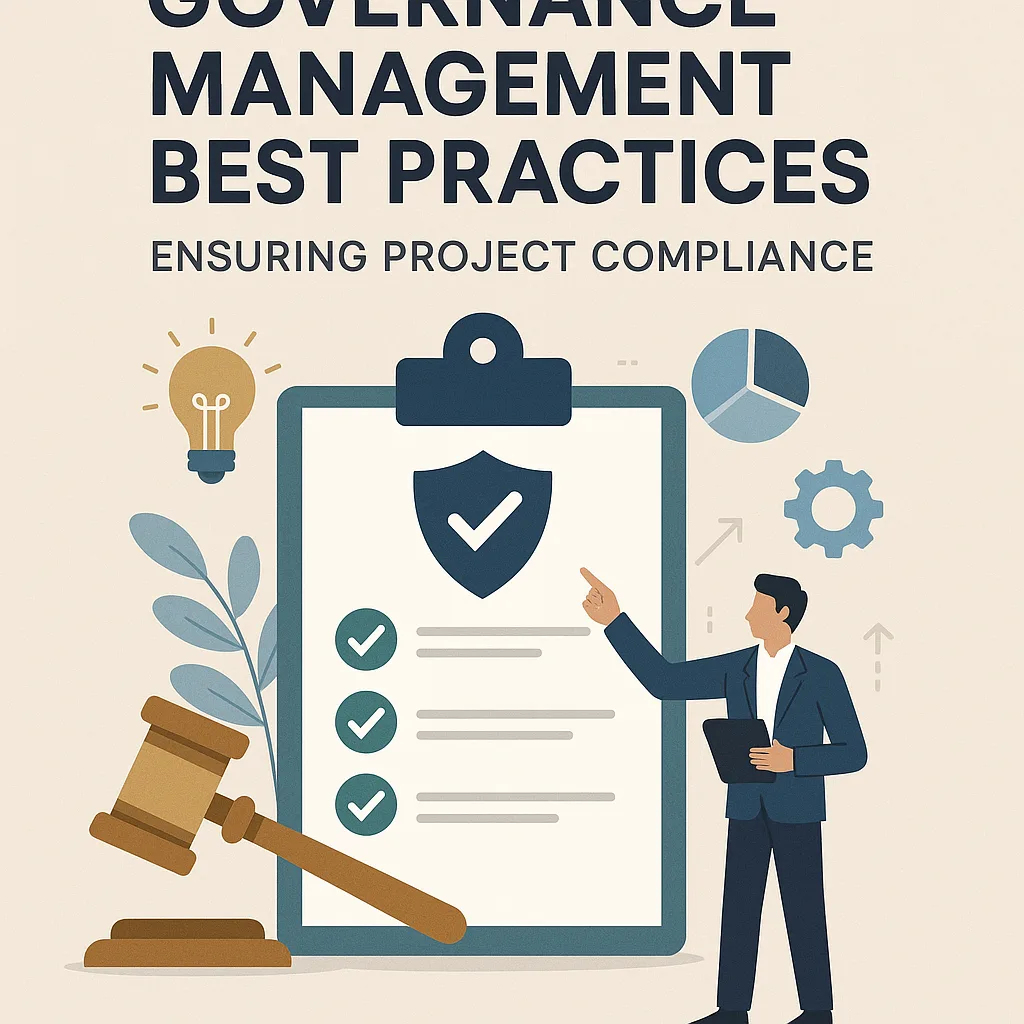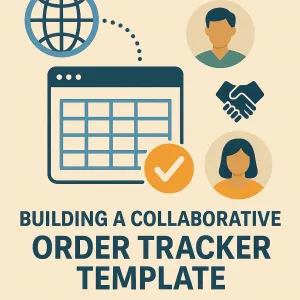Introduction to Governance Management
Governance management is a critical component of project management that focuses on the frameworks, processes, and practices that ensure projects are executed in alignment with organizational goals, regulatory requirements, and industry standards. It encompasses the structures and mechanisms that guide decision-making, accountability, and performance monitoring throughout the project lifecycle.
Definition of Governance Management in Project Management
In the context of project management, governance management refers to the systematic approach to overseeing and directing projects to ensure they meet their objectives while adhering to established policies and regulations. This includes defining roles and responsibilities, establishing decision-making processes, and implementing controls to monitor project performance. Effective governance management helps to mitigate risks, enhance transparency, and foster stakeholder engagement, ultimately leading to successful project outcomes.
Importance of Compliance with Industry Standards
Compliance with industry standards is paramount for organizations to maintain credibility, ensure quality, and minimize legal and financial risks. Adhering to these standards not only helps in meeting regulatory requirements but also enhances the organization’s reputation and competitive advantage. In project management, compliance ensures that projects are executed within the legal and ethical frameworks, which is essential for safeguarding the interests of stakeholders and the public. Furthermore, compliance with industry standards can lead to improved project efficiency, reduced costs, and increased stakeholder satisfaction.
Relevance of Governance Management for Compliance Officers and Project Managers
For compliance officers and project managers, governance management serves as a vital tool in navigating the complexities of project execution. Compliance officers rely on governance frameworks to ensure that all project activities align with legal and regulatory requirements, thereby protecting the organization from potential liabilities. On the other hand, project managers utilize governance management to establish clear guidelines and processes that facilitate effective project delivery while ensuring compliance. By integrating governance management into their practices, both compliance officers and project managers can foster a culture of accountability and continuous improvement, ultimately leading to more successful project outcomes.
Understanding Industry Standards for Project Compliance
Governance management plays a crucial role in ensuring that projects are executed in alignment with established industry standards. Compliance with these standards not only enhances project success but also mitigates risks associated with non-compliance. Below, we explore key industry standards, their influence on project governance, and the potential consequences of failing to adhere to these standards.
Overview of Key Industry Standards
- ISO (International Organization for Standardization): ISO standards, such as ISO 9001 for quality management and ISO 21500 for project management, provide frameworks that help organizations ensure quality and efficiency in their projects. These standards emphasize the importance of a structured approach to project management, which includes clear roles, responsibilities, and processes.
- PMI (Project Management Institute): PMI’s PMBOK (Project Management Body of Knowledge) is a widely recognized standard that outlines best practices in project management. It covers various knowledge areas, including scope, time, cost, quality, and risk management. Adhering to PMBOK guidelines helps project managers maintain consistency and improve project outcomes.
- ITIL (Information Technology Infrastructure Library): ITIL provides a set of practices for IT service management (ITSM) that focuses on aligning IT services with the needs of the business. ITIL emphasizes governance in IT projects, ensuring that services are delivered effectively and efficiently while meeting compliance requirements.
Influence of Standards on Project Governance
- Framework for Decision-Making: Industry standards provide a structured framework that guides decision-making processes within projects. This framework helps project managers and compliance officers ensure that all project activities align with organizational goals and regulatory requirements.
- Risk Management: Compliance with established standards aids in identifying and mitigating risks early in the project lifecycle. By following best practices, project teams can anticipate potential compliance issues and address them proactively, reducing the likelihood of project failure.
- Stakeholder Confidence: Adhering to recognized standards enhances stakeholder confidence in project governance. When stakeholders see that a project is being managed according to industry best practices, they are more likely to support the project and trust its outcomes.
Consequences of Non-Compliance
- Legal and Financial Repercussions: Failing to comply with industry standards can lead to legal issues, including fines and penalties. Organizations may also face financial losses due to project delays, rework, or the need for additional resources to rectify compliance failures.
- Reputation Damage: Non-compliance can severely damage an organization’s reputation. Stakeholders, including clients and partners, may lose trust in the organization’s ability to manage projects effectively, leading to lost business opportunities.
- Project Failure: Ultimately, non-compliance can result in project failure. Projects that do not adhere to industry standards are more likely to encounter issues such as scope creep, budget overruns, and missed deadlines, which can jeopardize the overall success of the initiative.
Establishing a Governance Framework
Creating an effective governance framework is essential for ensuring compliance with industry standards in project management. A well-structured governance framework not only facilitates adherence to regulations but also enhances project performance and stakeholder satisfaction. Below are key practices to consider when establishing a governance framework.
Components of a Governance Framework
- Policies and Procedures: Clearly defined policies and procedures are the backbone of any governance framework. They should outline the standards and expectations for project execution, including compliance requirements, risk management protocols, and reporting mechanisms.
- Governance Structure: This includes the hierarchy of governance bodies, such as steering committees, project boards, and oversight committees. Each body should have a defined purpose and authority to make decisions, ensuring that there is a clear chain of command.
- Roles and Responsibilities: Clearly delineating roles and responsibilities is crucial. This includes identifying who is responsible for compliance, risk management, and reporting. Each member of the governance body should understand their specific duties and how they contribute to the overall governance of the project.
- Performance Metrics: Establishing key performance indicators (KPIs) allows for the measurement of compliance and project success. These metrics should align with both project objectives and organizational goals, providing a clear framework for evaluation.
- Communication Plan: A robust communication plan ensures that all stakeholders are informed about governance processes, compliance requirements, and project status. Regular updates and feedback loops are essential for maintaining transparency and accountability.
Roles and Responsibilities of Governance Bodies
- Steering Committees: Typically composed of senior management and key stakeholders, steering committees provide strategic direction and oversight. They are responsible for approving project plans, budgets, and major changes, ensuring alignment with organizational goals.
- Project Managers: Project managers play a critical role in implementing the governance framework. They are responsible for day-to-day compliance with policies and procedures, managing risks, and reporting on project performance to the governance bodies.
- Compliance Officers: These individuals ensure that the project adheres to relevant laws, regulations, and industry standards. They conduct audits, monitor compliance, and provide guidance on best practices to mitigate risks.
- Stakeholders: All stakeholders, including team members, clients, and external partners, have a role in governance. Their input and feedback are vital for identifying potential compliance issues and ensuring that the project meets its objectives.
Aligning the Framework with Organizational Goals
To ensure that the governance framework is effective, it must be aligned with the broader organizational goals. Here are some strategies to achieve this alignment:
- Integration with Strategic Planning: The governance framework should be integrated into the organization’s strategic planning process. This ensures that project objectives support the overall mission and vision of the organization.
- Stakeholder Engagement: Engaging stakeholders in the development of the governance framework fosters buy-in and ensures that their needs and expectations are considered. Regular consultations can help identify areas where the framework may need to adapt to changing organizational priorities.
- Continuous Improvement: Establishing a culture of continuous improvement allows the governance framework to evolve in response to feedback and changing industry standards. Regular reviews and updates to the framework can help maintain its relevance and effectiveness.
- Training and Development: Providing training for all team members on governance practices and compliance requirements ensures that everyone understands their role in maintaining project integrity. This can include workshops, seminars, and access to resources that promote best practices.
By implementing these best practices, organizations can create a robust governance framework that not only ensures compliance with industry standards but also enhances project success and stakeholder satisfaction.
Key Practices for Ensuring Compliance
Governance management plays a crucial role in ensuring that projects adhere to industry standards and regulatory requirements. For compliance officers and project managers, implementing best practices is essential for maintaining project integrity and achieving successful outcomes. Here are some key practices that can facilitate adherence to governance standards:
- Regular Training and Awareness Programs for Project Teams: Continuous education is vital for keeping project teams informed about the latest compliance requirements and governance standards. Regular training sessions can help team members understand their roles in compliance, the importance of adhering to regulations, and the potential consequences of non-compliance. By fostering a culture of awareness, organizations can empower their teams to take ownership of compliance responsibilities and stay updated on industry changes.
- Integration of Compliance Checks into Project Management Processes: To ensure that compliance is not an afterthought, it is essential to integrate compliance checks throughout the project management lifecycle. This can involve establishing clear protocols for compliance at each project phase, from initiation to closure. By embedding compliance checks into project planning, execution, and monitoring, organizations can proactively identify and address potential compliance issues before they escalate. This integration also helps in aligning project objectives with regulatory requirements, ensuring that compliance is a fundamental aspect of project success.
- Utilization of Tools and Technology for Monitoring Compliance: Leveraging technology can significantly enhance compliance management efforts. Various tools and software solutions are available that can automate compliance monitoring, track regulatory changes, and provide real-time reporting on compliance status. By utilizing these technologies, project managers can streamline compliance processes, reduce manual errors, and ensure that all project activities are aligned with governance standards. Additionally, data analytics can provide insights into compliance trends, helping organizations make informed decisions and improve their compliance strategies over time.
By implementing these best practices, organizations can strengthen their governance management frameworks, ensuring that projects not only meet compliance requirements but also achieve their strategic objectives. This proactive approach to governance management not only mitigates risks but also enhances the overall success and sustainability of projects.
Risk Management in Governance
Effective governance management is crucial for ensuring that projects comply with industry standards and regulations. A significant aspect of this is risk management, which plays a vital role in identifying, assessing, and mitigating risks that could hinder compliance. Below are key points that outline the importance of risk management within governance management.
Defining Risk Management in Governance Management
Risk management in the context of governance management refers to the systematic process of identifying, analyzing, and responding to potential risks that could affect a project’s compliance with legal, regulatory, and organizational standards. This process involves:
- Identification of Risks: Recognizing potential compliance risks that may arise during the project lifecycle.
- Assessment of Risks: Evaluating the likelihood and impact of identified risks on project objectives and compliance requirements.
- Response Planning: Developing strategies to mitigate or eliminate risks, ensuring that compliance is maintained throughout the project.
By integrating risk management into governance practices, organizations can create a robust framework that supports compliance and enhances project success.
Methods for Identifying and Assessing Compliance Risks
To effectively manage compliance risks, organizations can employ several methods:
- Risk Assessment Frameworks: Utilizing established frameworks such as ISO 31000 or COSO can help in systematically identifying and assessing risks. These frameworks provide guidelines for risk management processes and ensure a comprehensive approach to compliance.
- Stakeholder Engagement: Involving stakeholders, including compliance officers, project managers, and team members, in the risk identification process can provide diverse perspectives and insights into potential risks.
- Regular Audits and Reviews: Conducting periodic audits and compliance reviews can help identify emerging risks and assess the effectiveness of existing controls. This proactive approach allows organizations to adapt to changing regulations and standards.
- Data Analysis and Monitoring: Leveraging data analytics tools can assist in identifying trends and patterns that may indicate compliance risks. Continuous monitoring of project activities and compliance metrics is essential for timely risk identification.
Importance of a Proactive Approach to Risk Mitigation
A proactive approach to risk mitigation is essential for ensuring compliance in governance management. This involves:
- Early Intervention: By identifying risks early in the project lifecycle, organizations can implement corrective actions before they escalate into significant compliance issues. This not only protects the organization from potential penalties but also enhances project credibility.
- Continuous Improvement: A proactive risk management strategy encourages organizations to continuously improve their governance practices. By learning from past experiences and adapting to new challenges, organizations can strengthen their compliance posture.
- Building a Compliance Culture: Promoting a culture of compliance within the organization fosters awareness and accountability among team members. When everyone understands the importance of compliance and their role in risk management, the likelihood of compliance breaches decreases.
Monitoring and Reporting Mechanisms
Monitoring and reporting mechanisms are crucial for ensuring compliance with industry standards. These practices not only help in tracking project progress but also in maintaining transparency and accountability among stakeholders. Below are key points that highlight the importance of these mechanisms.
Key Performance Indicators (KPIs) for Governance Compliance
Establishing clear Key Performance Indicators (KPIs) is essential for measuring governance compliance effectively. These KPIs should be aligned with the project’s objectives and industry standards. Some critical KPIs include:
- Regulatory Compliance Rate: This measures the percentage of compliance with relevant laws and regulations, providing insight into how well the project adheres to legal requirements.
- Audit Findings Resolution Rate: This KPI tracks the speed and effectiveness of addressing issues identified during audits, reflecting the organization’s commitment to continuous improvement.
- Stakeholder Satisfaction Index: Gathering feedback from stakeholders can help gauge their satisfaction with governance practices and compliance efforts.
- Risk Management Effectiveness: This measures how well risks are identified, assessed, and mitigated throughout the project lifecycle, ensuring that compliance risks are managed proactively.
By regularly monitoring these KPIs, project managers can identify areas for improvement and ensure that governance practices are upheld throughout the project.
Role of Audits and Assessments
Audits and assessments play a pivotal role in governance management by providing an independent evaluation of compliance with established standards. They serve several purposes:
- Identifying Gaps: Audits help in pinpointing areas where the project may not meet compliance requirements, allowing for timely corrective actions.
- Enhancing Accountability: Regular assessments foster a culture of accountability among team members, as they understand that their work will be subject to review.
- Continuous Improvement: The findings from audits can inform best practices and lead to the development of more effective governance strategies, ensuring that compliance is not just a one-time effort but an ongoing process.
Incorporating regular audits into the project timeline ensures that compliance is continuously monitored and that any deviations are addressed promptly.
Creating Effective Reporting Structures for Stakeholders
An effective reporting structure is vital for keeping stakeholders informed about compliance status and project governance. Here are some best practices for creating such structures:
- Define Reporting Frequency: Establish a clear schedule for reporting (e.g., weekly, monthly, quarterly) to ensure stakeholders receive timely updates on compliance status and project progress.
- Tailor Reports to Audience: Different stakeholders may require different levels of detail. Customize reports to meet the needs of various audiences, from high-level summaries for executives to detailed analyses for compliance officers.
- Utilize Visual Aids: Incorporating charts, graphs, and dashboards can enhance the clarity of reports, making it easier for stakeholders to grasp complex information quickly.
- Encourage Feedback: Create channels for stakeholders to provide feedback on reports, fostering a two-way communication process that can lead to improved governance practices.
By implementing these reporting structures, project managers can ensure that all stakeholders are engaged and informed, thereby enhancing compliance and governance throughout the project lifecycle.
Continuous Improvement in Governance Management
Governance management plays a crucial role in ensuring compliance with industry standards and regulations. To foster a culture of continuous improvement, organizations must implement best practices that not only enhance compliance efforts but also adapt to the evolving landscape of project management. Here are key practices that can significantly contribute to effective governance management.
Importance of Feedback Loops and Lessons Learned
- Establishing Feedback Mechanisms: Creating structured feedback loops is essential for identifying areas of improvement within governance practices. Regularly soliciting input from team members, stakeholders, and compliance officers can provide valuable insights into the effectiveness of current governance frameworks. This feedback should be systematically analyzed and integrated into project processes to enhance compliance efforts.
- Documenting Lessons Learned: After the completion of each project phase or at project closure, it is vital to conduct a thorough review of what worked well and what did not. Documenting these lessons learned not only helps in refining governance practices but also serves as a reference for future projects. This practice encourages a proactive approach to compliance, allowing teams to anticipate challenges and implement solutions before issues arise.
Strategies for Updating Governance Practices
- Regular Review of Standards and Regulations: Governance practices must be dynamic and responsive to changes in industry standards and regulations. Establishing a routine schedule for reviewing relevant compliance requirements ensures that governance frameworks remain aligned with current expectations. This could involve appointing a compliance officer or a dedicated team responsible for monitoring changes in legislation and industry best practices.
- Training and Development: Continuous education and training for project managers and compliance officers are critical in keeping the team informed about new standards. Workshops, seminars, and online courses can be utilized to disseminate knowledge about emerging regulations and best practices in governance management. This investment in human capital not only enhances compliance but also fosters a culture of continuous improvement.
- Utilizing Technology: Leveraging technology can streamline the process of updating governance practices. Compliance management software can automate the tracking of regulatory changes and facilitate the dissemination of updated policies and procedures across the organization. This ensures that all team members are aware of their compliance responsibilities and can act accordingly.
Conclusion
Effective governance management is paramount for ensuring compliance with industry standards. It serves as the backbone of project integrity, guiding teams through the complexities of regulatory requirements and organizational policies. By establishing a robust governance framework, organizations can mitigate risks, enhance accountability, and foster a culture of transparency.
Key takeaways from our discussion on governance management best practices include:
- Importance of Governance Management: Governance management is essential for aligning project objectives with compliance requirements. It ensures that all stakeholders are aware of their roles and responsibilities, thereby reducing the likelihood of non-compliance and project failure.
- Implementation of Best Practices: Compliance officers and project managers are encouraged to adopt the best practices outlined in this blog. These practices not only streamline processes but also enhance the overall effectiveness of governance structures. By integrating these strategies, teams can better navigate the regulatory landscape and uphold industry standards.
- Commitment to Ongoing Learning: The landscape of compliance is ever-evolving, making it crucial for professionals to engage in continuous learning. Staying updated on industry standards and emerging trends will empower compliance officers and project managers to adapt their governance strategies effectively.
In conclusion, the journey towards better governance management is ongoing. By prioritizing compliance and actively implementing best practices, organizations can not only achieve project success but also build a reputation for reliability and integrity in their respective industries. Let us commit to fostering a culture of compliance and excellence in project management.
Find out more about Shaun Stoltz https://www.shaunstoltz.com/about/.
This post was written by an AI and reviewed/edited by a human.



